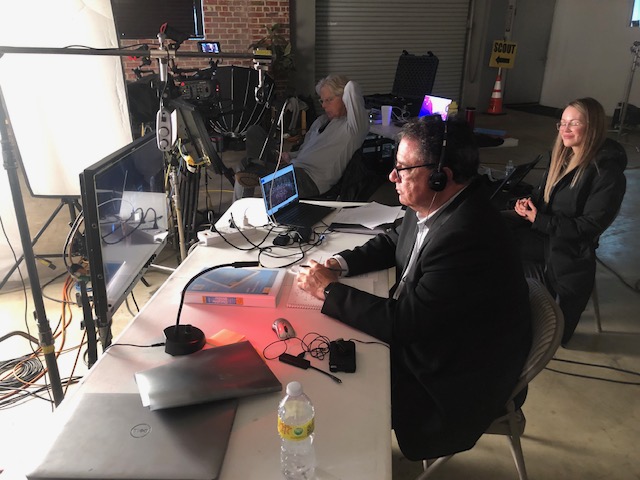ST. GEORGE — A John Wayne film is pivoting from epic flop to symbol of awareness in a new movie entitled “The Conqueror Hollywood Fallout,” which highlights the devastating impacts nuclear testing had on the cast and crew of the 1956 film “The Conquerer.”

The new film will screen Saturday, June 29, at 7 p.m., followed by a Q&A with the director and film participants at the Megaplex Theatres at Pineview Plaza.
Produced by Howard Hughes and released in 1956, “The Conqueror” was part Western and part musical and filmed in parts of Snow Canyon Park. The production starred John Wayne as Genghis Khan and featured Susan Hayward, Pedro Armendariz and Agnes Moorehead. Dick Powell, a former actor, directed it.
Of the 220 cast and crew members who worked on “The Conqueror,” 91 reportedly came down with cancers, and 45 died, including Wayne, Hayward, Moorehead and Powell. Armendariz allegedly killed himself when he was given a terminal diagnosis of cancer.
Directed by William Nunez, “The Conqueror of Hollywood Fallout” explores the dark history of “The Conqueror,” which he said is not widely known by people outside of Southern Utah.
Based on screenings of his film, Nunez told St. George News that he found a need to spread more awareness about the extensive impacts of nuclear testing.
“The audiences didn’t know that the radiation not only affected Washington County and parts of Nevada and Arizona, but it’s spread throughout the entire nation, so we’re all affected,” Nunez said.
He also wanted to give downwinders a voice in telling their stories, he added.
In “The Conqueror,” St. George’s deep red sands and cliffs were transformed to resemble the Gobi Desert, Nunez said, but one year before production began, the U.S. government exploded a series of atomic tests 135 miles from Southern Utah. These nuclear tests were 10 times more powerful than the bombs dropped on Hiroshima and Nagasaki, he said.

It wasn’t until a People magazine article linked Waynes’ death to nuclear testing that the U.S. government investigated and acted toward giving the area around the Nevada Test Site any compensation, Nunez said. There were 928 nuclear tests conducted at the site between 1951 and 1992, according to the Nevada National Security Site, about 100 of which were atmospheric and 828 underground. Additionally, the U.S. government conducted 1,030 nuclear tests from 1945 to 1992, according to the Arms Control Association.
In St. George, men in their 30s developed prostate cancers, women came down with thyroid cancers and the rates of leukemia in children were 3 times higher than the national average.
“The Conqueror Hollywood Fallout” unfolds how the cancer rates and death toll climbed due to the continuing testing at the Nevada Test Site. In the film, residents of Southern Utah share their memories of watching the testing, family members who succumbed to cancer and how they contracted cancer as well.
The downwinders also share the stories of their fight for justice, including efforts made to force Congress to pass the Radiation Exposure Compensation Act. This legislation includes an apology from the government for testing and covering up the dangers and providing some compensation to victims.
Nunez’s film also discusses how radiation affects the United States and how testing still threatens its environment.
“The Conqueror” had always fascinated Nunez. He was working on his last feature film, “The Laureate,” during the pandemic and said he realized working on another feature movie was likely remote.
“I was watching the film ‘The Conqueror’ on television, and it was so awful,” he said. “But I remember the story of how the cast and crew contracted cancer because of this awful film.”

He called his producer, Douglas Waller, since they were reviewing their next project. Nunez suggested a documentary on the making of the film and its impacts on the cast and crew. He was also introduced to James Hunt of Blue Fox Entertainment from Utah. And the idea for the film blossomed from there.
Nunez said he hopes people viewing his film will see that “nothing really changes.”
The film will be rolled out selectively to build word of mouth, he said.
“We will conduct Q&A’s and bring the message out that this is a topic that affects us all,” Nunez said. “The issues and the topics that were part of the 1950s in regards to nuclear power is still an issue that haunts us to this day.”
Nunez also noted the expiration of the Radiation Exposure Compensation Act, which compensates those who have had exposure to radiation from atomic weapons testing and uranium mining. The U.S. House of Representatives stopped the act from being expanded.
Photo Gallery

A new film, "The Conqueror Hollywood Fallout," explores the legacy of “The Conqueror” featuring John Wayne and Susan Hayward (L to R), whose cast and crew suffered high cancer rates, location and date not specified | Photo courtesy of William Numez, St. George News

The crew of “The Conqueror Hollywood Fallout" films in Southern Utah, location and date not specified | Photo courtesy of Photo courtesy of William Numez, St. George News

The crew of “The Conqueror Hollywood Fallout" films in Southern Utah, location and date not specified | Photo courtesy of Photo courtesy of William Numez, St. George Ne

The crew of “The Conqueror Hollywood Fallout" films in Southern Utah, location and date not specified | Photo courtesy of William Numez, St. George News

The crew of “The Conqueror Hollywood Fallout" films in Southern Utah, location and date not specified | Photo courtesy of William Numez, St. George News

The crew of “The Conqueror Hollywood Fallout" films in Southern Utah, location and date not specified | Photo courtesy of William Numez, St. George News

The crew of “The Conqueror Hollywood Fallout" films in Southern Utah, location and date not specified | Photo courtesy of William Numez, St. George News

The crew of “The Conqueror Hollywood Fallout" films in Southern Utah, location and date not specified | Photo courtesy of William Numez, St. George News

